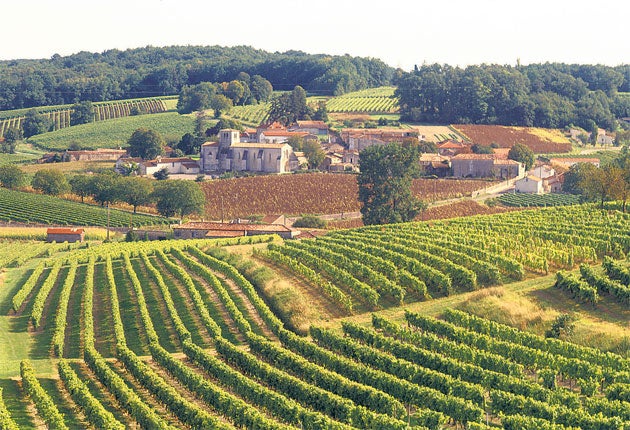Cognac: Go to the top of the sip parade
Don’t just try the cognac when you visit the area: blend your own, says Cathy Packe

“This one is delicious chilled and served with oysters,” said Sylvie Perret.
I was in the tasting room at Camus, one of the largest cognac houses in the world, and lined up in front of uswas a daunting array of glasses. Sylvie was describing what we were tasting, but all this was just a preliminary to the real point of my visit, a session with the master blender, Patrick Leger, whowould guide me through the process of blending my own personal bottle of cognac.
Blending, or assemblage, is the end of a process that starts in the vineyards of Charente and Charente- Maritime, in the centre ofwhich is the town of Cognac itself.
Cognac country is divided into regions – Grande Champagne, for example, or Borderies – and the grapes from the different regions are distilled twice, then aged for a minimum of three years before they are ready to be assembled into the final product.
Not all the producers are as large, or as global, as Camus. For example, Christophe Forgeron is typical of many cognac-makers in the region. His is a family business, started by his parents on some five acres of land in 1965; now he has nearly 60 acres. He continues to use the original still, and hewas one of the last of the local producers to stop hand-picking the grapes. Forgeron welcomes visitors, and he took me into his warehouse. There he dipped a glass into a large barrel, so that I could taste the dark liquid ageing inside.
The grapes from which he distills his cognac all come from within a couple of miles of his house, and he does everything, from growing to bottling, himself. He appreciates the freedom this gives him, in comparison with the large producers, whose clients expect a consistent blend year after year.
“I don’t have to have the same taste each time,” explains Forgeron. “I do what I like. It’s up to me.”
Meanwhile, in the tasting room at Camus, Leger was leaving it up to me – although he did offer the benefit of his experience. He lined up four cognacs, each chosen for their different qualities, and after we had tasted them all, Leger asked me to decide on the proportions of each that I would like in my own assemblage.
I was to decide whether I wanted an aperitif, to be served chilled, or whether my preference was something more robust to accompany coffee and a cigar. Words like supple, masculine and spicy were bandied about, but where Leger thought the taste was of patisserie, I had a mouthful of wet laundry. I made my choice and put the liquids together in my chosen quantities.
As to whether I have any talent as a blender, it is too early to tell. I brought the bottle home with me – labelled, sealed and packaged in a smart wooden box. But in order for every thing to be properly combined, I’m under strict instructions to leave it for three months before I can taste the results.
Camus Cognac, 29 rue Marguerite de Navarre, Cognac (00 33 5 45 32 28 28; camus.fr) opens 10.30am- 12.30pm and 2-6pm Tuesday- Saturday, 2-6pm on Mondays from June to September; October-May by appointment. Tours cost from €7.
Master Blender workshops must be booked in advance, last one hour and cost €160.
Christophe Forgeron, Chez Richon, Segonzac (00 335 45834305; cognacforgeron.com) welcomes visitors at any time. Tours can last from one to four hours and are free.
Join our commenting forum
Join thought-provoking conversations, follow other Independent readers and see their replies
Comments